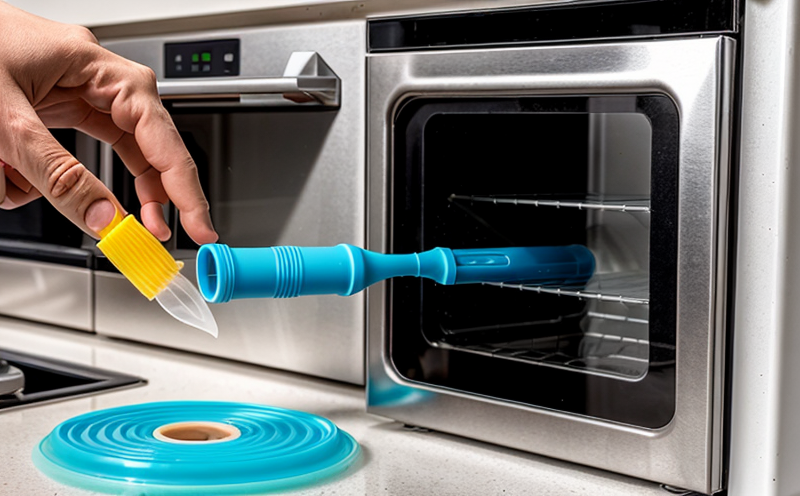ASTM D1003 Haze and Transparency Testing of Household Plastics
The ASTM D1003 standard is widely recognized as a critical tool in the evaluation of household plastics. This test measures both haze (the degree to which light is scattered) and transparency, providing essential insights into the optical properties of plastic materials used in everyday items such as kitchen utensils, containers, and packaging.
Understanding these parameters is crucial for quality managers and compliance officers who need to ensure that products meet market expectations and regulatory standards. For R&D engineers, this test offers valuable data on material performance during development stages. In procurement processes, it helps in selecting suppliers based on consistent product quality.
The ASTM D1003 procedure involves a series of steps designed to accurately measure the haze and transparency values using an integrating sphere. The sphere collects light from the specimen, which is then analyzed by a spectrophotometer. This process ensures that all incident rays are measured uniformly, providing consistent results across different samples.
Specimen preparation plays a significant role in achieving accurate test results. Samples must be prepared according to ASTM D1003 guidelines, ensuring they represent the intended optical properties of the material being tested. Proper conditioning and handling can significantly influence final test outcomes.
The instrument used for this testing is typically an integrating sphere equipped with a spectrophotometer capable of measuring light transmission through the specimen. This setup allows for precise measurements of both haze and transparency, contributing to reliable data analysis.
ASTM D1003 specifies acceptance criteria that define acceptable levels of haze and transparency based on material type and intended use. Compliance with these standards ensures that products meet customer expectations while also facilitating easier market entry in international markets.
Test reports generated from ASTM D1003 provide detailed information about the measured haze and transparency values, along with any comments or recommendations for improvement if necessary. These reports are valuable tools for decision-makers within organizations, guiding future product development efforts or process improvements aimed at enhancing overall quality standards.
In summary, ASTM D1003 Haze and Transparency Testing of Household Plastics is an indispensable part of ensuring that household plastics meet required optical performance levels. By following this rigorous testing procedure, manufacturers can produce high-quality products that satisfy consumer demands and regulatory requirements alike.
Why It Matters
The importance of ASTM D1003 Haze and Transparency Testing cannot be overstated when it comes to household plastics. These properties directly impact how consumers perceive the appearance and quality of their products.
For example, a clear plastic container for storing food should ideally have minimal haze so that its contents can be easily seen through the packaging. High haze levels could lead to dissatisfaction among customers because they might feel that the product does not meet expectations regarding visual appeal or functionality.
In addition to consumer satisfaction, there are also broader implications related to safety and environmental considerations. Some household plastics may contain additives intended to enhance their optical properties. Ensuring these additives do not adversely affect transparency can prevent potential hazards such as reduced visibility in automotive parts or decreased durability due to increased light scattering.
From an economic perspective, accurate measurement of haze and transparency allows manufacturers to optimize production processes by identifying optimal processing conditions that yield desired results without unnecessary costs associated with excessive material usage. It also helps in maintaining consistent quality across batches produced over time.
Customer Impact and Satisfaction
Customer satisfaction is paramount for any business operating within the household plastics industry. By providing products that meet or exceed customer expectations regarding optical performance, companies can build strong brand loyalty and foster long-term relationships with their clients.
The ASTM D1003 test results contribute significantly to this goal by offering objective measures of how well a particular plastic material performs optically under specified conditions. When used during the design phase of new products or modifications to existing ones, these data points can inform decisions about selecting appropriate raw materials and refining manufacturing techniques.
Moreover, sharing ASTM D1003 reports with customers demonstrates transparency and commitment towards quality assurance efforts. This openness fosters trust between suppliers and buyers, encouraging repeat business opportunities and potential expansions into new markets.
In conclusion, focusing on ASTM D1003 Haze and Transparency Testing ensures that household plastics not only look appealing but also function effectively for their intended purposes. Ultimately, this focus enhances customer satisfaction levels, driving growth and profitability within the industry.
International Acceptance and Recognition
The ASTM D1003 standard enjoys widespread acceptance across various regions worldwide due to its rigorous methodology and consistent results. It has been adopted by numerous countries as part of national standards or recommended guidelines for evaluating household plastics.
In Europe, EN ISO 9854-1:2017 corresponds closely with ASTM D1003, meaning that tests performed using this American method will yield comparable outcomes in many cases. Similarly, other international bodies like IEC TC61 Subcommittee SC6A have referenced ASTM D1003 when developing related standards.
Recognition from these global organizations underscores the reliability and relevance of ASTM D1003 Haze and Transparency Testing for household plastics. This international acceptance ensures that manufacturers can confidently use this testing procedure regardless of geographical location, knowing that their results will be universally understood and respected.





